Issey Miyake: A Look Back at a Fashion Maverick

PARIS — Japanese fashion maverick Issey Miyake, famed for his cutting-edge fabric and bestselling perfumes, died in a Tokyo hospital at age 84.
The cause of death was hepatocellular carcinoma, a type of liver cancer, according to a brief release Tuesday from the Miyake Design Studio and the Issey Miyake Group, which added that he was “surrounded by close friends and associates” at the time of his passing.
More from WWD
There will be no funeral or memorial service, per the designer’s wishes.
Miyake founded his design studio in 1970 and made it synonymous with colorful, practical and innovative garments. He was one of the first Japanese designers to show in Paris and was part of a wave of talents that put the island nation on the international fashion map in the ’70s.
The designer is perhaps best known for his Pleats Please franchise, whose crimped fabrics have recently enjoyed growing popularity among men, for whom the label reads Homme Plissé Issey Miyake.
He also launched a string of popular and innovative fragrances, headlined by his iconic L’Eau d’Issey women’s scent.
A-POC — or A Piece of Cloth — the experimental line Miyake founded in 1998, was emblematic of the designer’s constant search for designs that addressed the needs of contemporary lifestyles. A-POC clothes were initially produced in a continuous knitted tube with cutout patterns the wearer cut herself.
His product universe today also includes eyewear, watches and light fixtures.
The designer had gradually withdrawn from the frontlines of the creative process, passing the design baton to a string of acolytes who have continued to enliven Paris Fashion Week with fashion shows incorporating elements of dance and performance.
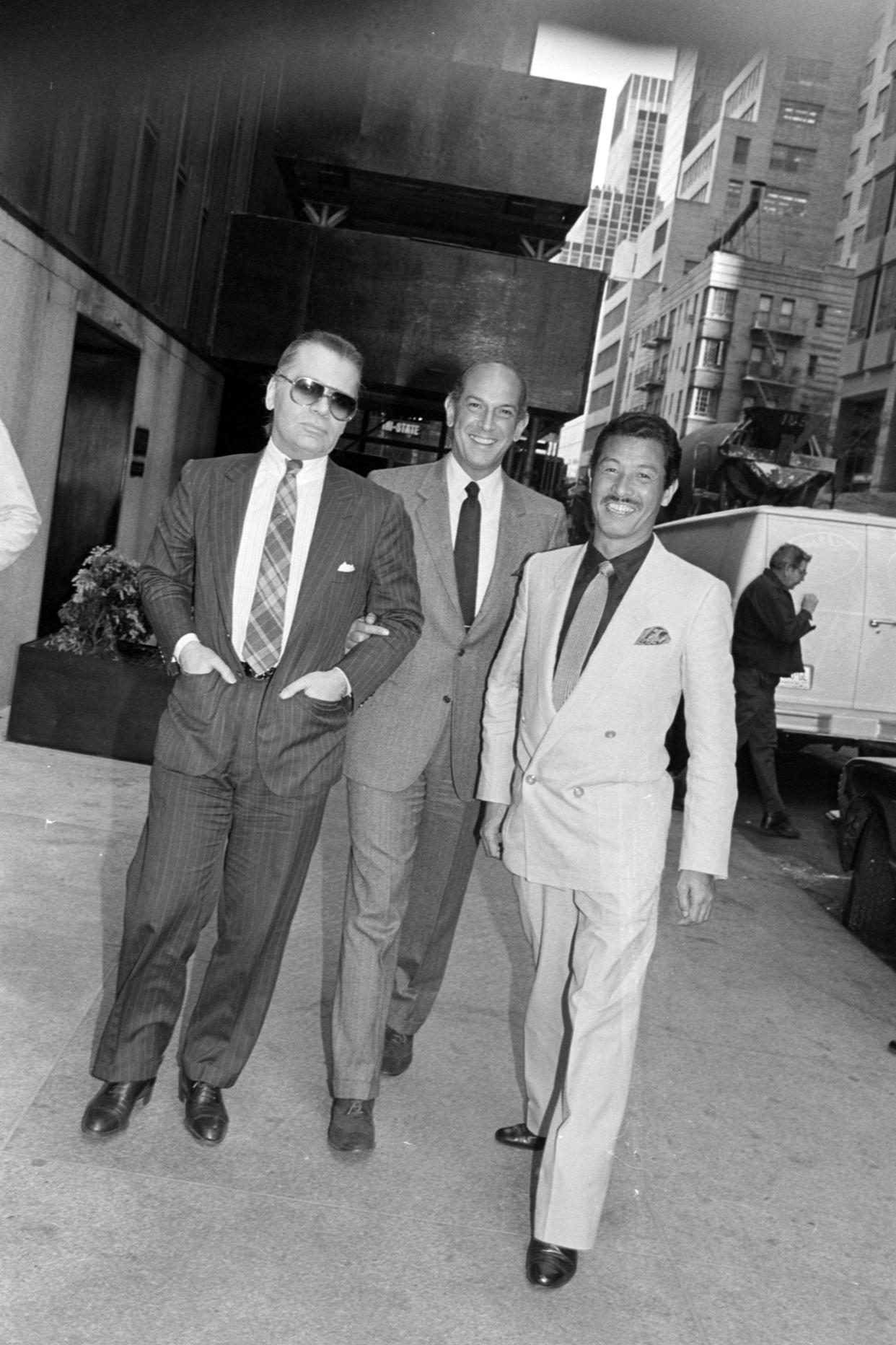
WWD
According to the company website, “Miyake’s direction focuses not only upon individual creativity and research but also upon the teamwork. It leads to the cultivation of the next generation of talent.”
In a statement on Tuesday, the house said: “Never one to embrace trends, Miyake’s dynamic spirit was driven by a relentless curiosity and desire to convey joy through the medium of design. Always a pioneer, Miyake both embraced traditional handcrafts but also looked to the next solution: the newest technology driven by research and development. He never once stepped back from his love, the process of making things. He continued to work with his teams, creating new designs and supervising all collections under the various Issey Miyake labels. His spirit of joy, empowerment and beauty will be carried on by the next generations.”
Born in Hiroshima in 1938, Miyake trained as a graphic designer and graduated from the Tama University of Fine Arts in Tokyo. He moved to Paris in 1965, enrolling in the Chambre Syndicale de la Couture Parisienne school and going on to work as an apprentice to Guy Laroche and Hubert de Givenchy.
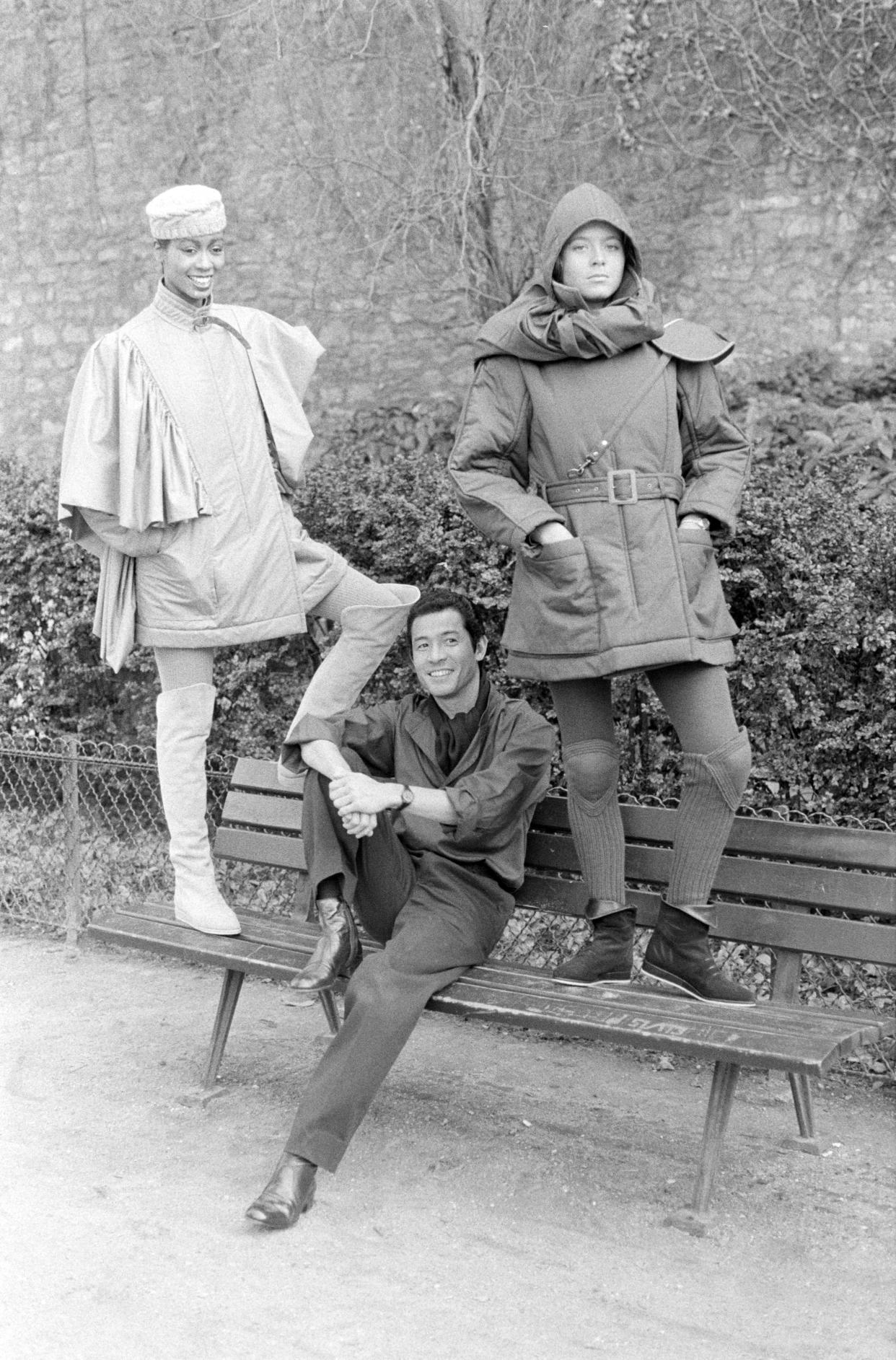
WWD
“I studied haute couture, and it was a very good education for me, but they had already perfected it — I could not go beyond,” Miyake told WWD in a 2007 interview. “So I went to New York to do something new, but I had to think of something, something different from European fashion.”
After a brief stint on Seventh Avenue, where he worked with Geoffrey Beene, he returned to Japan in 1970 and made an immediate splash with his Tattoo dress, an homage to Jimi Hendrix and Janis Joplin. Bloomingdale’s began buying Miyake’s pieces, and his career started to take off. By 1973, he was already moving away from traditional fabrics like wool and silk, using nylon and polyester instead.
“In 1988, I started working with pleats, and I wanted them to hold their shape and be easy to care for and to be washable,” he recalled in a 2007 interview with WWD. “In Tokyo, we are close to the manufacturer, and we can see what they are doing and what more we can do.”
His Pleats Please collection, introduced in 1993, soon became one of his most successful enterprises, prized for its easy shapes, inventive prints and suitability for travel.
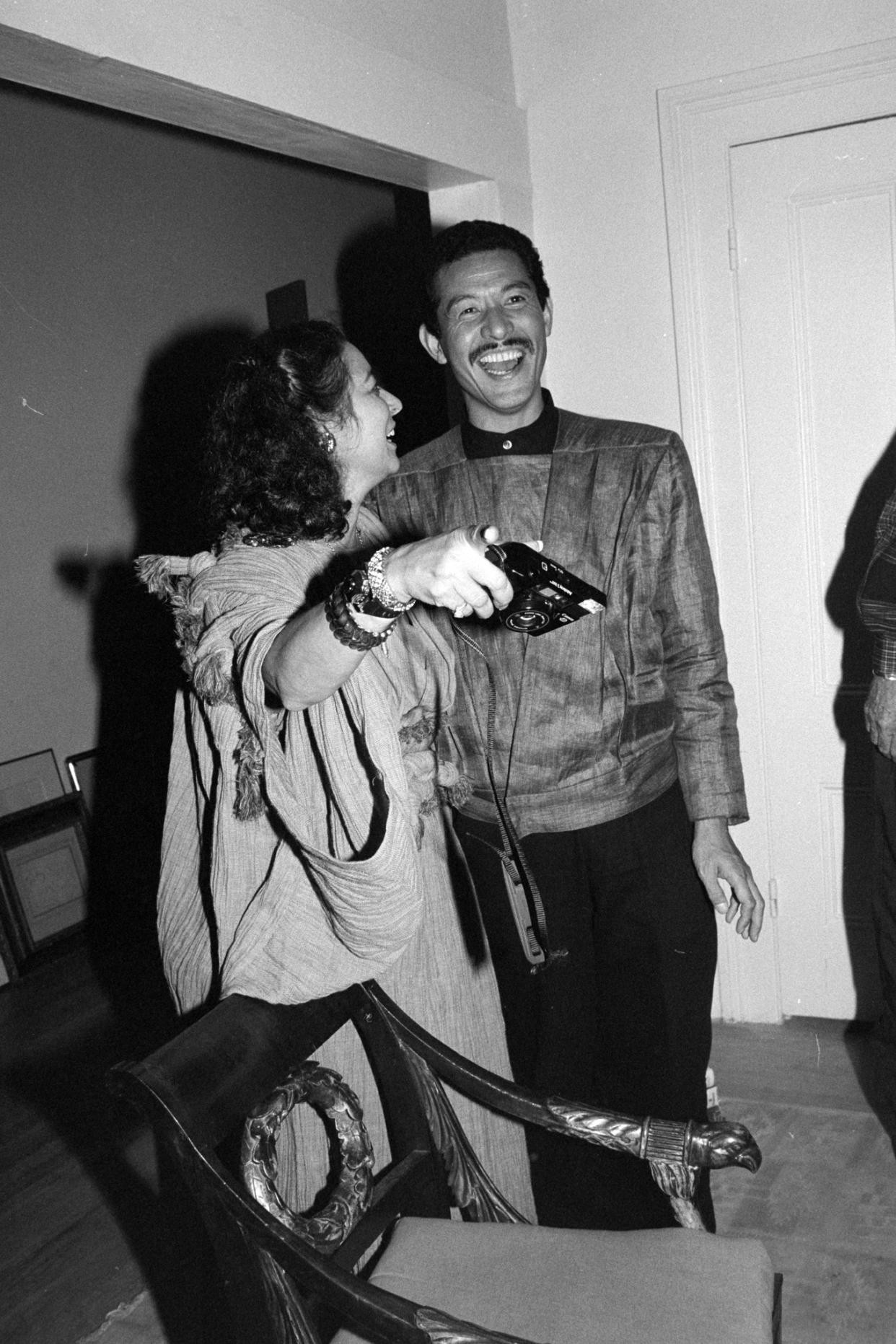
WWD
“It takes seven or eight years for people to understand what I am doing,” he said about his A-POC project.
His design staff collaborates with local artisans and factories, and also experiments with new materials and techniques at Miyake’s own workshops. “This process gives birth to original materials, innovative technologies and unique methodologies,” according to the company’s website, which articulates its design philosophy and spirit.
“Miyake’s clothing is ‘a piece of cloth’ wrapped around the body,” it states. “We start there and then ask fundamental questions beyond that, what clothing is and can be, generating ideas that expand outward as we pursue the creation of products and manufacturing skills required to suit the needs of the current generation and time.”
Miyake was recognized with numerous awards, particularly in France and his native Japan. In 2010, Japan’s then Emperor Akihito bestowed the prestigious Order of Culture on the designer at Tokyo’s Imperial Palace. He also received the 2006 Kyoto Prize, Japan’s highest private award for lifetime achievement.
Organizing and managing exhibitions is among his company’s stated purposes, and it has participated in dozens over the years.
“Making Things,” which debuted at the Cartier Foundation for Contemporary Art in Paris in 1998 and moved on to the Ace Gallery in New York the following year, highlighted how Miyake always explored the outer reaches of technological possibility in his designs.
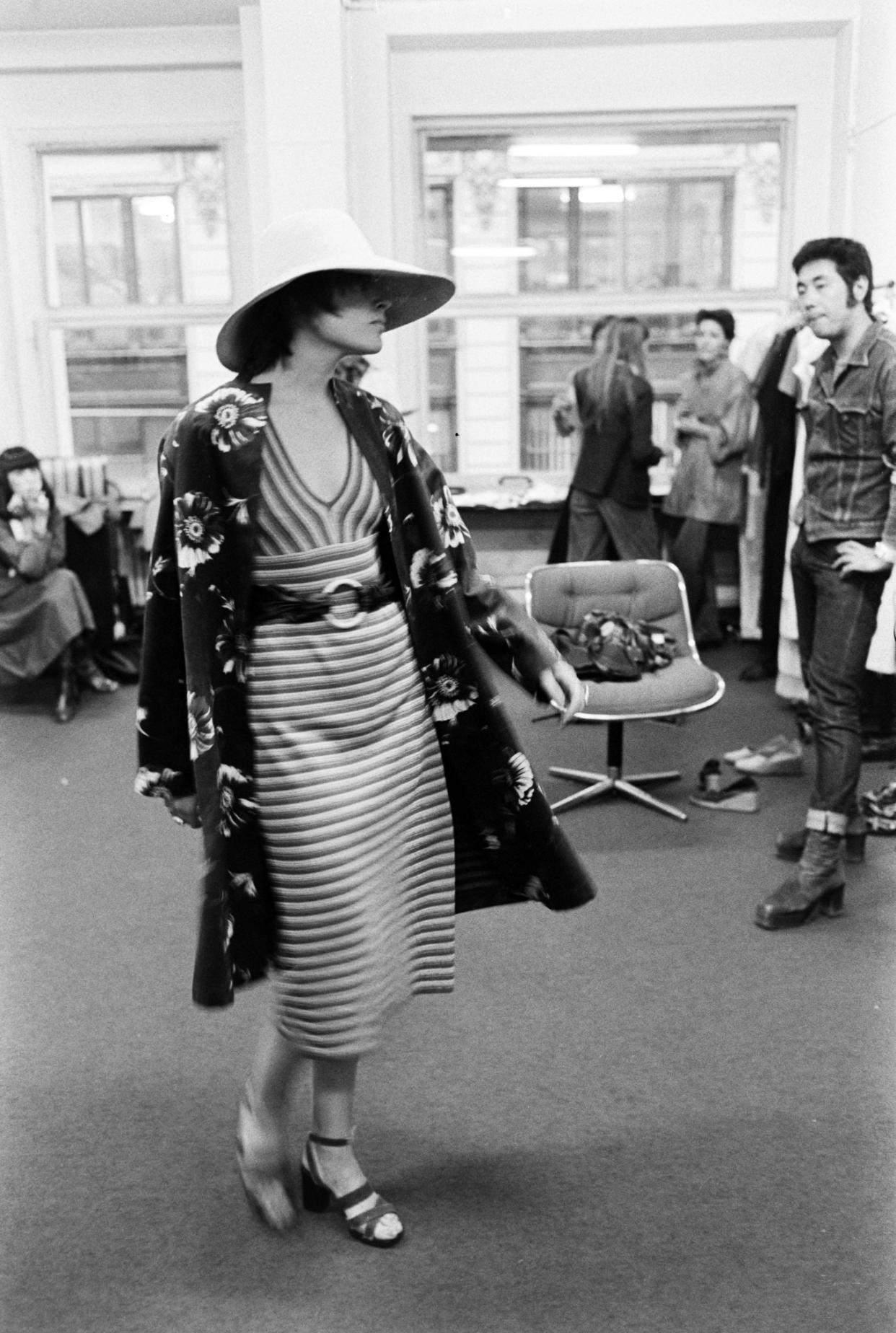
WWD
“Usually people think that to make clothes, you have fabric, then you sketch it, cut it, sew it and then it becomes clothing,” he told WWD at the time. “It’s a nice way, but it’s a traditional way. Maybe I’m a little contrary, but it’s enjoyable to find another way to do it.”
Besides his famous pleated garments, which bounced whimsically for visitors at his exhibition, Miyake also made draped nylon dresses realized with a single piece of nylon and without scissors, needle or thread.
Throughout his long career, Miyake initiated a host of labels and collections. In the late 1990s, he even established an affiliate company that backed young designers including Final Home and Tsumori Chisato.
After starting out as a section of the Issey Miyake womenswear line in 1976, Issey Miyake Men became a brand in its own right in 1978. The label made its first appearance at Paris Fashion Week for fall 1985 and was discontinued with the fall 2020 collection.
Homme Plissé Issey Miyake, the masculine counterpart to Pleats Please that was introduced in 2013, enjoyed wider distribution.
Last year, the company introduced a new men’s brand, IM Men, debuting it at its stores in Toyko’s Aoyama. Its other brands include 132 5 Issey Miyake, based on folded, flat shapes that become 3D when worn; Issey Miyake Me, dedicated to one-size-fits-all tops, and A-POC able, the latest iteration of its initial 1998 experiment.
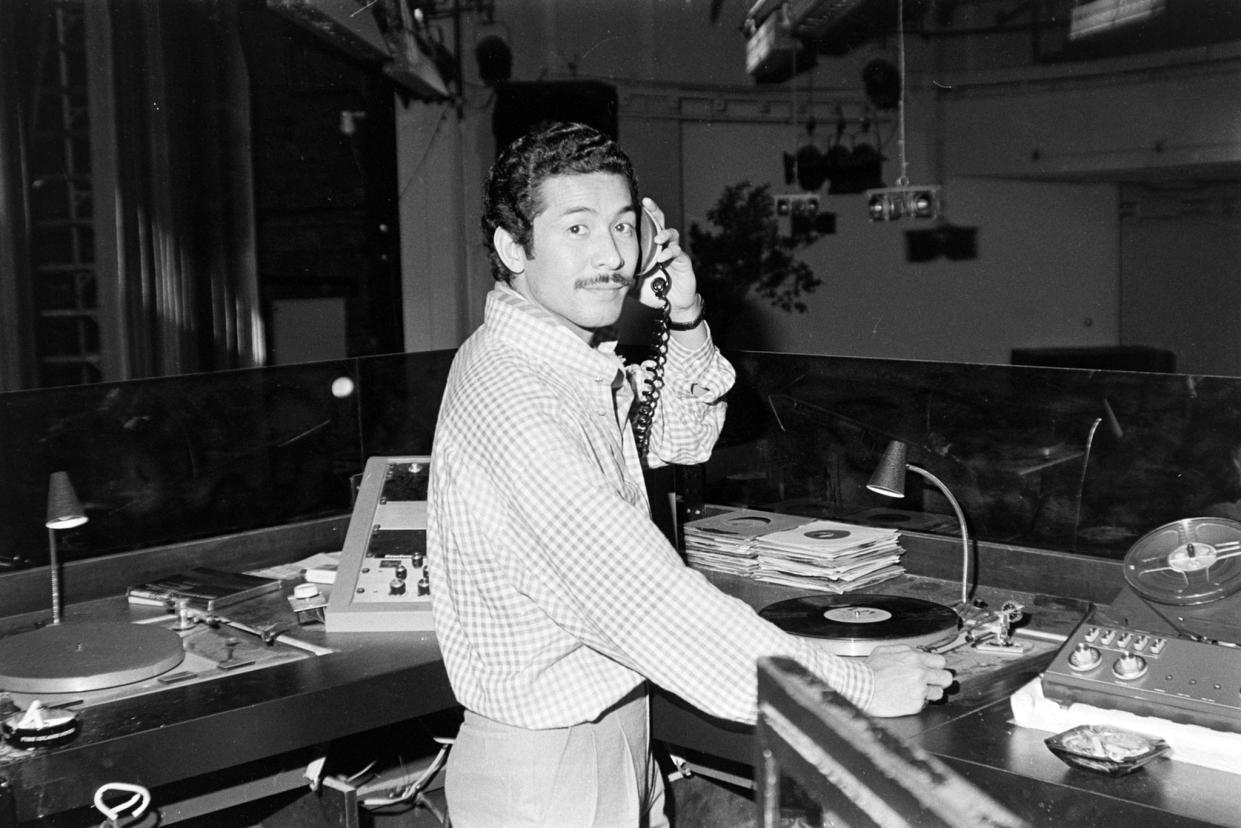
John Bright/WWD
Among fans of Miyake menswear was the late Steve Jobs. Word has it Apple’s cofounder, forever in a black turtleneck, loved those made by Miyake and ordered them in substantial quantities.
Bruce Pask, men’s fashion director at Bergdorf Goodman and Neiman Marcus, called Miyake an “early leader in size-inclusive fashion” with his Homme Plissé range.
He said it has gained “incredible popularity” among men of all ages. “The durability and performance of the fabric as well as the wide variety of garment shapes, colors and prints has been key to its broad appeal while the unmistakable accordion-pleated look serves as an identity signifier as strong as any logo,” he added.
Miyake began showing his women’s collection in Paris in April 1973, when he became the first foreign designer to show at Paris Fashion Week. He would later become a member of French fashion’s organizing body, and a member of its board.
“Issey Miyake was a great fashion designer. He knew how to bring cultures together and contributed, with unwavering commitment, to the influence of Paris Fashion Week from its beginning,” said Bruno Pavlovsky, president of the Fédération de la Haute Couture et de la Mode.
“Issey Miyake was a great designer and also a great innovator who marked his time by marrying the newest techniques with traditional know-how,” added Pascal Morand, executive president of the Fédération.
Singer Grace Jones frequently wore Issey Miyake designs for performances throughout her career. Miyake was a pioneer in casting her, Bethann Hardison and others for a 1976 show in Tokyo titled “Issey Miyake and Twelve Black Girls.”
In 2000, he introduced his modular Bao Bao bag made of triangular vinyl patches superimposed over mesh, which gives it a high-tech and transformable appearance. Bao Bao Issey Miyake became a freestanding accessories brand starting with the fall 2010 season.
The designer also broke new ground in the world of fragrance.
He signed a licensing agreement in 1991 with Shiseido Co. to produce his first women’s fragrance. It was the debut scent to be manufactured by Beauté Prestige International, or BPI, a Paris affiliate set up by Shiseido that year.
“When I thought of perfume, the first thing that came to mind was water,” Miyake told WWD in 1992. “So we called it L’Eau d’Issey, which is also a play on the word ‘odyssey.’”
The soft, colorless fragrance came in a mold-breaking conical shaped bottle, with a metallic cap topped with a clear ball.
Chantal Roos, who was BPI’s former chief executive officer and built Miyake’s fragrance business with him, recalled the designer as saying: “I don’t like perfumes, I don’t like fragrances. I only like pure water running on the body of a woman.”
She remembered Miyake as being open to discussing business, but with strict visions of what he had in mind. “For example, for the advertising it was Irving Penn and nobody else,” said Roos.
The Penn-lensed ad campaign bore the tag line “Le parfums Pure d’Issey Miyake” in Europe.
Miyake collaborated frequently with Penn for catalogues, posters and campaigns, ultimately publishing two books dedicated to the images their collaboration produced.
Miyake was surprised at the success of his first scent, which became a classic in the designer firmament. L’Eau d’Issey won numerous prizes, including a Fragrance Foundation FiFi for best women’s introduction in Europe in 1993.
“People recognize me more through my perfume than my fashion now,” he said in a 1994 interview.
A men’s scent came next, L’Eau d’Issey Pour Homme. And L’Eau d’Issey went on to inspire other perfumes from the designer.
Today, the portfolio, still under Shiseido, includes the Drop d’Issey, L’Eau d’Issey Pour Homme and Fusion d’Issey fragrances.
“When I think of Mr. Miyake, the words that come to my mind are ‘pure creation,’ ‘vision,’ ‘integrity,’ ‘humility,’ ‘respect’ and ‘teamwork,’” said Nathalie Helloin-Kamel, formerly chief brands officer at BPI, and currently CEO of Give Back Beauty. “He has always favored creativity over business, and has always been ready to bear the consequences of this decision. Compromise was not part of his vocabulary.
“Because of this mindset, he probably missed a few commercial opportunities, but never lost his soul and kept the uniqueness of both his fashion and fragrance brand,” said Helloin-Kamel. “He was an artist.
“As his fragrance partner, I was sometimes impatient and frustrated not to be able to match the fragrance market expectations and rules,” she continued. “Yet a few years later, I know he was right!”
“He was such a creator, with a real vision and he brought so much innovation in all his work,” said Eric Henry, formerly chief operating officer of BPI and today president of consulting firm EH4B. “He was not only a fashion designer, he was an amazing ‘inventor.’
“As far as fragrances are concerned, he opened a new chapter in the perfume world with Les Eaux, along with Mr. [Yoshiharu] Fukuhara and Chantal Roos,” continued Henry, who spent 18 years helping to build the Issey Miyake fragrance business around the world.
Henry also noted that Miyake was “always very nice, polite and caring.”
Designers, historians and retailers said his fashion legacy is also assured.
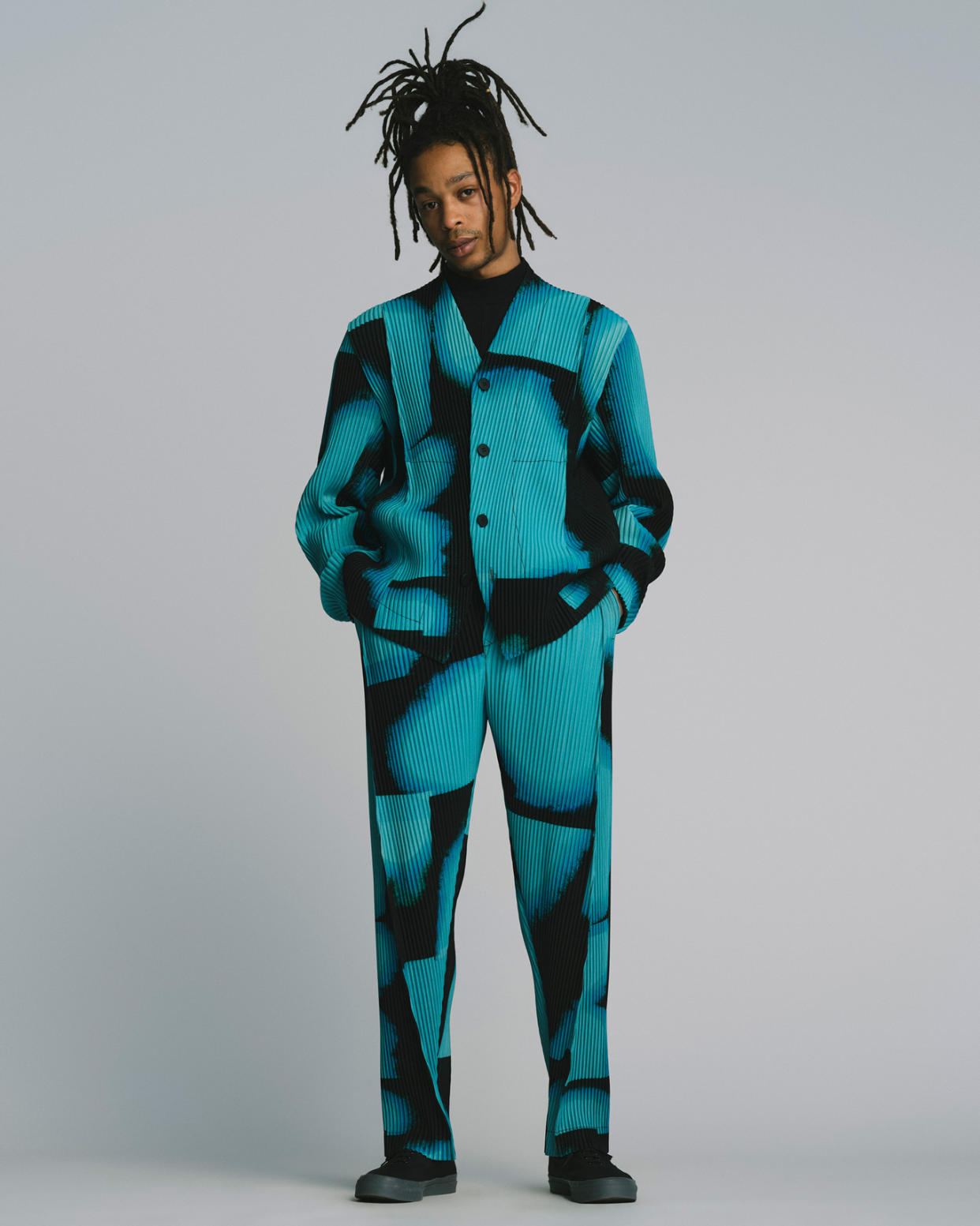
Courtesy of Homme Plisse Issey Miyake
“Issey and his giant contribution to the world of fashion is immeasurable,” according to Zandra Rhodes. “A pioneer of pleating and beyond, Issey’s talents knew no bounds and this is reflected in his cult following throughout the decades.”
Rhodes said Miyake introduced her to the traditional Japanese tea ceremony — and also to Seibu store executives, giving her a boost early in her career.
“The amazing flowers he would send me when I came to Tokyo became the inspiration for one of my most cherished prints named ‘Field of Lilies,’” she related. “I often think of Issey’s kind and genuine aura, one that stayed with you long after he left your presence.”
Didier Grumbach, longtime head of France’s governing body and a pioneer in France’s ready-to-wear industry, said Miyake received acclaim, attention and esteem from the moment he arrived on French soil — many years before Yohji Yamamoto and Rei Kawakubo.
He endeared himself to many in Paris with his personal warmth, charm and extraordinary gifts. Grumbach recalled receiving a jacket Miyake had made in collaboration with a Japanese artist. “You could put it in a museum,” he marveled.
“Issey Miyake was more than a fashion designer — he was a scientist and architect,” said designer Christopher Kane. “His clothes are so much more than fashion — they really are the pinnacle of invention and evolution. They will never in my eyes be of a time or place, simply just brilliant.”
Sebastian Manes, executive buying and merchandising director at Selfridges, said Miyake’s influence cannot be underestimated. “His timeless designs combine freedom of movement and creativity. We are saddened to learn of his passing today.”
American retailers spotted Miyake’s potential early, including Martha Phillips of the famed Martha chain. Her grandson Andrew Burnstine, who did the buying and ran day-to-day operations of all five locations, recalled a shipment received in the early ’70s.
“When the clothes arrived in the Palm Beach store, Martha Phillips viewed the collection on her house models and remarked, ‘I’m not exactly sure what kind of cotton or materials that he is using to make these clothes, but I’ve never seen anything fit a woman’s body so well, or so precisely,’” he related. “With that, she called in her daughter Lynn and suggested she call Miyake directly to set up trunk shows in both Florida locations.”
Fashion historian Olivier Saillard, who coauthored a 2012 book on Pleats Please, said Miyake wanted his designs to be democratic and universal, based more on function than fashion, and suited to the movement of dancers as much as people in everyday life.
Saillard deemed the Japanese designer “the greatest among the greats,” and someone who “knew how to give back to society [despite] what it had inflicted on him,” through his clothing and projects like the 21_21 Design Sight museum in Tokyo, imagined with architect Tadao Ando.
Miyake was “warm, tactile, charming, with a great elegance and modesty given everything he had been through [as a survivor of the 1945 atomic bombings],” Saillard said.
“Always guided by his profound interest in people and the human form, Issey Miyake redefined the relationship between body and garment, and pushed the boundaries between fashion, art and technology,” said Miren Arzalluz, director of the Palais Galliera fashion museum. “His designs were true milestones in the history of fashion and transformed the way women and men around the world moved, felt and lived.”
Former French culture minister Jack Lang shared his grief on Instagram, writing about Miyake: “He was unique. And you felt unique when you wore one of his garments. I had the good fortune to be dressed by him. I was proud of it because his dreamlike wardrobe seemed to elevate you and allowed you to touch the sublime. Issey was a sacred treasure and this morning, I’m forever inconsolable.”
— With contributions from Jennifer Weil, Lily Templeton, Tianwei Zhang, Lisa Lockwood and Hikmat Mohammed
Launch Gallery: Issey Miyake Dies at 84: A Look Back at the Designer’s Career
Sign up for WWD's Newsletter. For the latest news, follow us on Twitter, Facebook, and Instagram.
